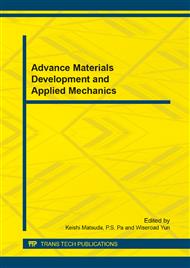[1]
GIllberg , 1985 ; Gillberg & Gillberg , 1989 , GIllberg et al , (1988).
Google Scholar
[2]
Ayres, Mailloux & Wendler, 1987; Goodgole - Edwards & Cermak , (1990).
Google Scholar
[3]
Gillberg, DAMP, 1992 : Hellgren et al, (1994).
Google Scholar
[4]
King MB, Tinetti ME, 1995, Falls in community-dwelling older persons: J Am Geriatr Soc; 43: 1146-54.
DOI: 10.1111/j.1532-5415.1995.tb07017.x
Google Scholar
[5]
Pedersen PM, Wandel A, Jorgensen HS, et al, 1996, Ipsilateral pushing in stroke: incidence, relation to neuropsychological symptoms, and impact on rehabilitation—the Copenhagen stroke study. Arch Phys Med Rehabil, 77: 25-8.
DOI: 10.1016/s0003-9993(96)90215-4
Google Scholar
[6]
Geusens P, Autier P, Boonen S, Vanhoof J, Declerck K, Raus J, 2002: The relationship among history of falls, osteoporosis, and fractures in postmenopausal women. Arch Phys Med Rehabil; 83: 903-6.
DOI: 10.1053/apmr.2002.33111
Google Scholar
[7]
Arden NK, Nevitt MC, Lane NE, GoreLR, Hochberg MC, Scott JC, et al, 1999: Osteoarthritis and risk of falls, rates of bone loss, and osteoporotic fractures. Arthritis Rheum; 42: 1378-85.
DOI: 10.1002/1529-0131(199907)42:7<1378::aid-anr11>3.0.co;2-i
Google Scholar
[8]
Chih-Ming Huang, The effect of Seating and Positioning Support on Muscle Tone of the Severe Snastic Cerebral Palsy, National Cheng Kung University Tainan, Taiwan, R.O. C.
Google Scholar
[9]
Wei-Chun Hsu, Tung-Wu Lu, Hao-Ling Chen, Anticipatory Postural Adjustments in Gait Initiation from Different Initial Stance Width, Institute of Biomedical Engineering, National Taiwan University, Taiwan, R.O. C.
Google Scholar
[10]
Bohannon RW. Gait performance of hemiparetic stroke patients: selected variables. Arch Phys Med Rehabil 1987; 68: 777-81.
Google Scholar
[11]
Czerwosz, L. ; Mraz, M. ; Curzytek, M. ; Biaszczyk, J. Application of virtual reality in postural stability rehabilitation., Virtual Rehabilitation International Conference, p.214, (2009).
DOI: 10.1109/icvr.2009.5174252
Google Scholar
[12]
Deutsch, J.E. ; Robbins, D. ; Morrison, J. ; Bowlby, P.G. Wii-based compared to standard of care balance and mobility rehabilitation for two individuals post-stroke, Virtual Rehabilitation International Conference, pp.117-120, (2009).
DOI: 10.1109/icvr.2009.5174216
Google Scholar
[13]
Sen Zhang ; Kee Hao Leo ; Boon Yuen Tan ; Tham, R.Q.F. A hybrid human motion tracking system for virtual rehabilitation, Industrial Electronics and Applications, 6th, p.1993 – 1998, (2011).
DOI: 10.1109/iciea.2011.5975919
Google Scholar
[14]
Cikajlo, I. ; Rudolf, M. ; Goljar, N. ; Matjacic, Z. Virtual reality task for telerehabilitation dynamic balance training in stroke subjects, Virtual Rehabilitation International Conference, p.121 – 125, (2009).
DOI: 10.1109/icvr.2009.5174217
Google Scholar
[15]
Cikajlo, I. ; Oblak, J. ; Matjacic, Z. Haptic floor for virtual balance training, World Haptics Conference (WHC), p.179 – 184, (2011).
DOI: 10.1109/whc.2011.5945482
Google Scholar


